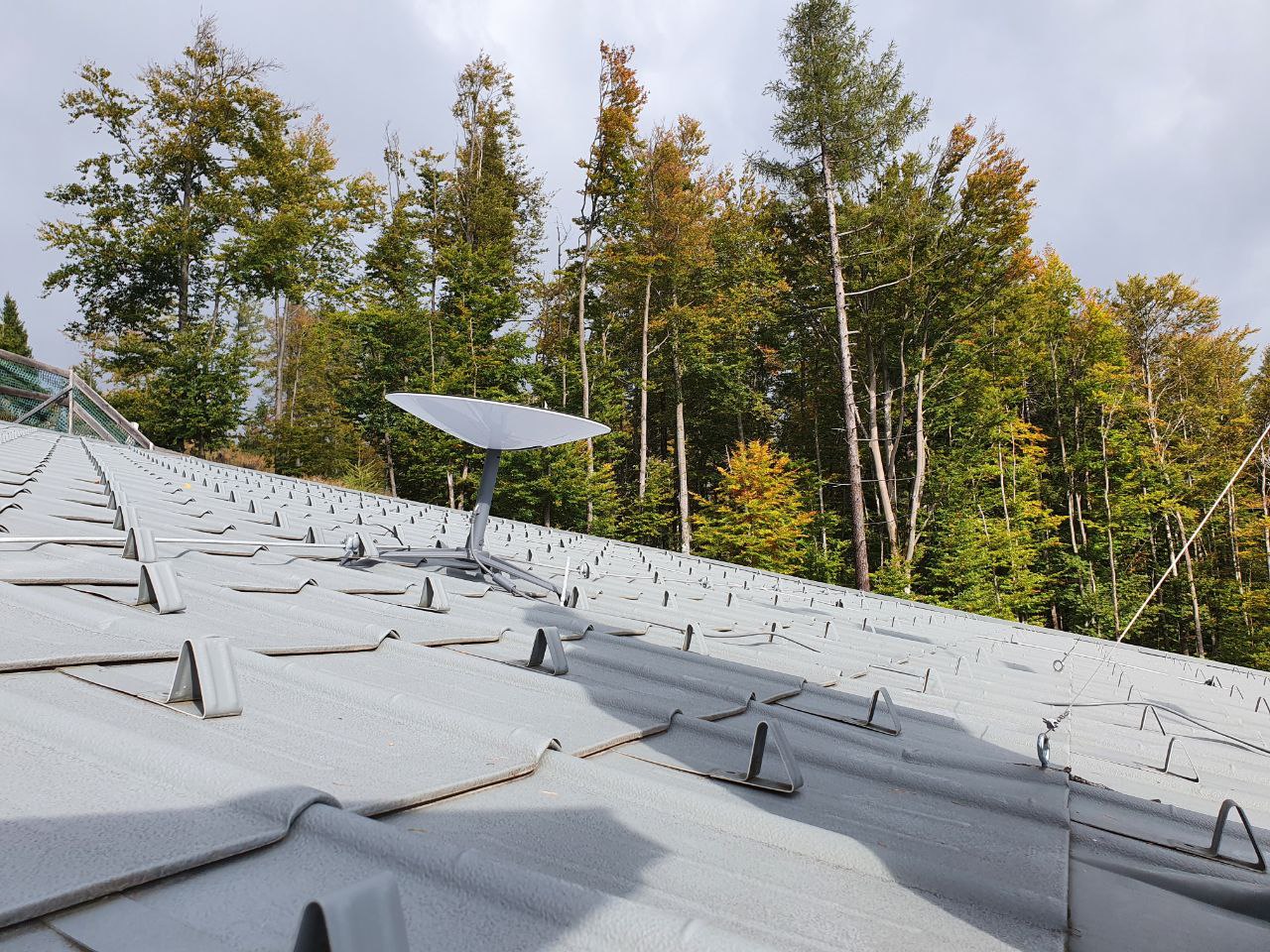Starlink
Starlink is a satellite network, maintained by the SpaceX company, which should provide global Internet access in the future. A beta test has started in 2020. In 2021 I applied as beta tester for the then available system in mid latitudes. As a geophysical observer I am interested in whether such system can assist us in broadcasting our open earth observation data particularly from remote locations and whether the bandwith is suitable for remote operations and maintenance.
Geophysical data from seismometers, geomagnetic sensors, meteorological stations and many other related disciplines are often obtained from remote locations. Detailed analysis and interpretation of such data needs to be conducted near real time in order to facilitate in time hazard warnings. Data transmission is usually a significant problem. When needing remote control features bandwidth becomes essential. The Starlink antenna might provide a solution for such problems.
Terrella
Terralla is an art project enabling you to listen to sounds of the Earth’s magnetic field. Terrella uses live data from geomagnetic observatories around the world and turns it into music. It is recommended to use headphones. Details can be found here: http://geomagneticmusic.net/
Geomagnetic reversals
Investigating the occurence, morphology and consequences of geomagnetic field reversals is the primary goal of this project. Within the framwork of an FWF proposal (P30523-N29) we aimed on identification and sampling transitional geomagnetic field information at three sites: in Styria (Austria), São Nicolau (Cabo Verde) and St. Helena. The first target for the paleomagnetic search of intermediate field directions were the Pleistocene and Pliocene volcanic rocks from South-East-Austria (Styria). 28 sites were sampled on eight Pliocene volcanoes of which four gave paleo-directions and intensities in the range expected from secular variation. The remaining 4 volcanoes have low paleo-inclinations and intensities. A transitional geomagnetic field configuration was recorded during the short eruptive activity of these volcanoes. Two new 39Ar-40Ar ages allow the correlation of the Styrian transitional directions with cryptochron C2r.2r-1 of the geomagnetic polarity time scale. As a cryptochron has a short duration of less than 10 to 30 ka, at least 4 of the investigated 8 Styrian volcanoes have been formed in a much shorter time interval than previously suggested. Results are published here . The second sampling campaign was conducted on island São Nicolau (Cape Verde) in October 2018. According to Duprat et al. (2007) the island is built up by basalts of predominantly late Miocene to Pleistocene age. We sampled three promising sections containing field reversal, but did font find transitional directions. A publication on secular variation is in preparation. Finally, a third sampling campaign on St. Helena was undertaken. We sampled in detail and expanded a section already investigated by our collaborators in Liverpool in which a field transition is recorded. Additionally, one other section with mixed polarity was sampled. Most of the obtained paleointensities are considerably lower than the present day or the dipole field intensity. During the polarity transition a drop in the field strength is apparently not present. Although we could discover transitional geomagnetic field directions in two of the projected three volcanic provinces modelling of the geomagnetic field during a field transition is hampered. Examples of such global models can be found here .



